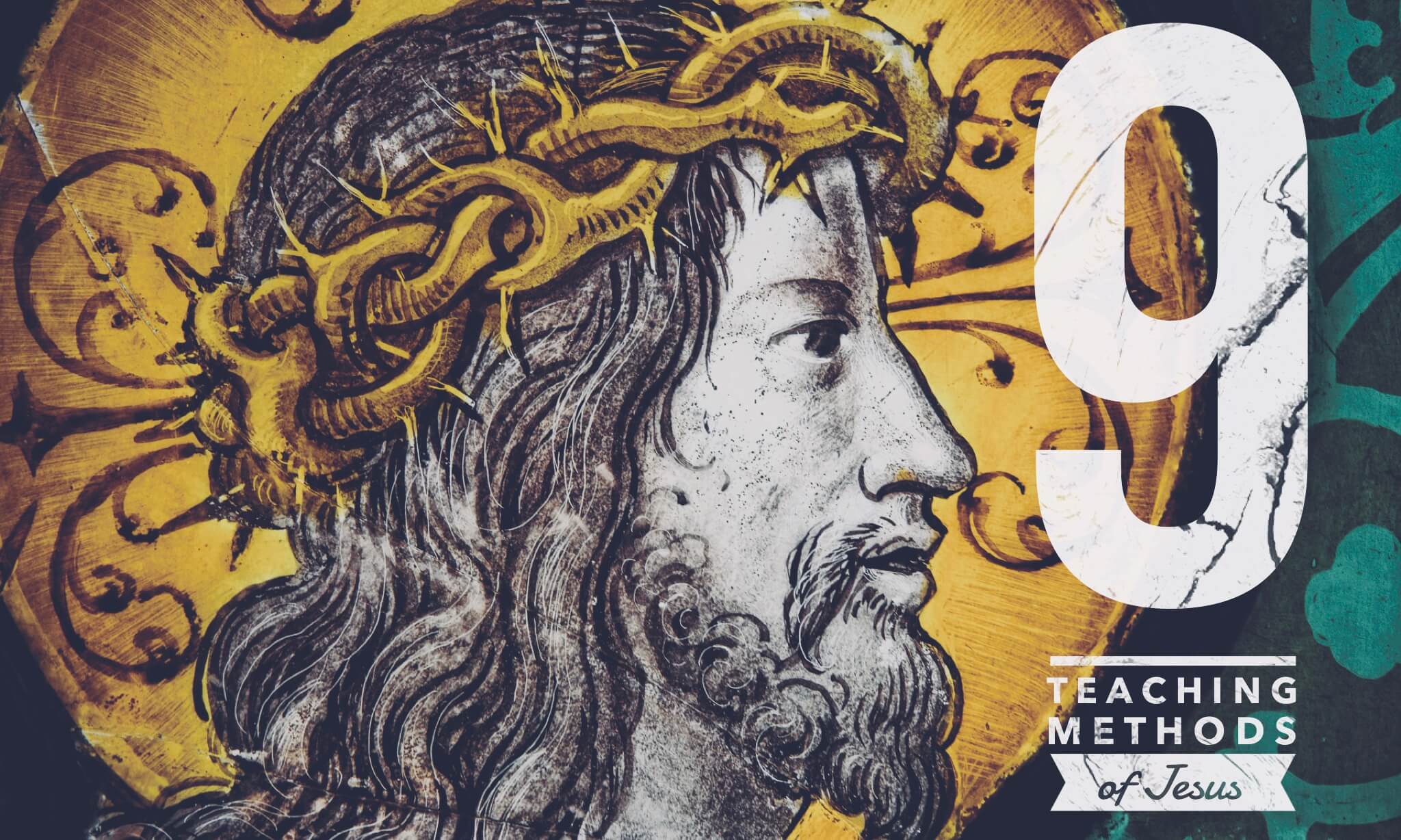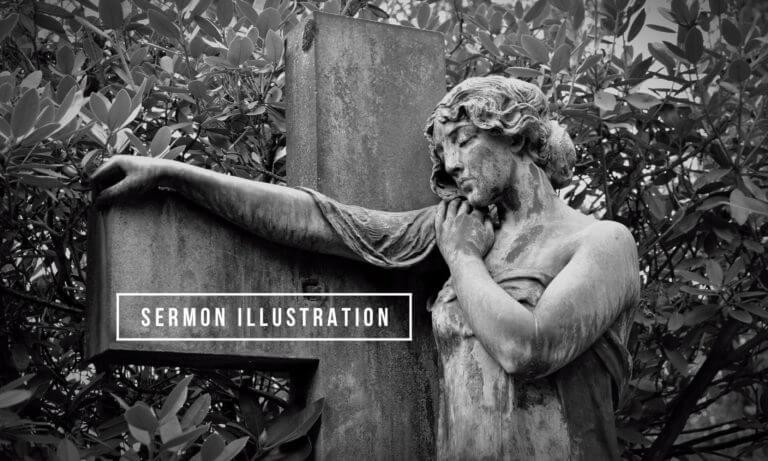9 Teaching Methods of Jesus
Jesus was the master teacher. Thousands would gather to hang on his every word. People traveled far and wide just to hear him. The lessons he taught spread like fire and literally changed the world.
As pastors, if there is anyone we should emulate in our preaching and teaching it is Jesus! Right?
So how did Jesus teach?
Here are nine methods Jesus used that we can apply:
Jesus Spoke by His Authority
Other teachers quoted credible teachers or teachings to borrow authority. Jesus, on the other hand, boldly declared, “You have heard this, but I tell you…” (Matthew 5:22, 28, 32, 34, 39, 44).
The crowds were amazed because He taught as one who had authority, unlike other teachers (Mark 1:22, Matthew 7:28-29). Jesus alone could do this because he is the Word (John 1). All authority on Heaven and Earth has been given to him (Matthew 28:18).
Application: We cannot preach on our authority, but that’s OK. Jesus gives us his. Preach the Word. Our power and authority come from Christ alone.
Jesus Told Stories
As you are aware, Jesus told countless parables. He pulled spiritual truths from everyday life. Not only did these stories make his teaching more memorable, they also connected in a much more profound way.
Think about the parable of the Prodigal Son. Jesus could have taught, “God loves you so much that He will welcome you back no matter how sinful you have lived.”
Instead, Jesus tells the story of a boy who disowned his family, partied away his inheritance, came home to beg for mercy, but was surprisingly welcomed with open arms by his father who waited daily for his return.
Which is more powerful?
Application: Tell stories. Lots of them. Use everyday life to teach profound spiritual truths.
Jesus Shocked People
Jesus often used hyperbole. He used outrageous examples, exaggerations, or shocking statements to get your attention. These statements were not all meant to be taken literally, but they definitely got the point across.
For example, Jesus didn’t really mean we have to rip out our eyes and amputate our hands for causing us to sin (Matthew 5:29-30), or else all Christians would be blind amputees. He also didn’t mean that the people he was speaking to literally had logs in their eyes (Matthew 7:3-5). He was making a point.
Jesus said things that shocked people and exaggerated the truth to emphasize his point.
Application: Shock people. Exaggerate a little. Say outrageous things that aren’t meant to be literal, but grab attention and communicate the point clearly.
Jesus Crafted Memorable Sayings
Jesus spoke poetically. He used catchy sayings and plays on words. This isn’t always apparent in English translations. However, in the original language, Jesus made it much easier for his listeners to remember what he said.
For example, Jesus memorably said, “Judge not, and you will not be judged; condemn not, and you will not be condemned; forgive, and you will be forgiven; give, and it will be given to you.” (Luke 6:37-38a, ESV). Another great example is the Golden Rule (Luke 6:31).
Application: Craft sticky statements. As Andy Stanley says, “Memorable is portable.” If your people remember the lesson, they will carry it with them wherever they go.
Jesus Asked Questions
Rather than just tell everyone the answer, Jesus led his listeners to conclusions by asking a lot of questions. For examples see Matthew 16:26, or 22:20-21, and check out this cool resource: 173 Questions Jesus Asked.
Questions are a powerful teaching method, especially when teaching to hostile people (like unbelievers). Questions stimulate critical thinking. Good questions make the audience demand answers.
Application: Ask a lot of questions. Don’t underestimate the power of a good question.
Jesus Used Visual Illustrations
Jesus often used object lessons to communicate concrete truth to his listeners. He washed the feet of the disciples to teach servant leadership (John 13:3–17). He called a little child to him to discuss childlike faith (Matthew 18:1–4). He described unselfish giving after watching a widow drop two small coins into the temple offering (Mark 12:41–44). When he told the parable of the sower, there is a good chance he was standing near a field.
Visually communicated truth is far more powerful than only spoken truth.
Application: Use objects and visual illustrations. Block out time to be creative and think of ways to communicate your message visually.
Jesus Used Repetition
Jesus helped his listeners understand and remember his teachings by the use of frequent repetition. He taught the same major themes again and again. For example, Jesus spoke of his death and resurrection over and over again (Mark 8:31; 9:31; 10:33–34), and his disciples still didn’t get it.
Sometimes people need to hear something many times over before they get it. Plus, teachings that get repeated get remembered.
Application: Re re re repeat. Repetition builds emphasis and breeds memory. What gets repeated gets remembered. Find the main point of your message and say it again and again.
Jesus Created Experiences
It wasn’t enough for people to just listen to his teachings. Jesus gave instructions and called them to do what he said. For example, he didn’t just teach the disciples what to do, he then sent them out to do it and report back when they were done (Luke 9:1–6, 10).
Jesus’ teaching demanded action. But not everyone could handle it, such as the rich young ruler (Luke 18:18-23). Our experiences test our faith and teach us more than any sermon ever could.
Application: Don’t just tell them what to do. Provide opportunities for them to do it. Create experiences to apply the lesson. Ask, “How could I help my listeners actually live this out?”
Jesus Practiced What He Preached
There is no greater example of a preacher following his own teachings than Jesus. Jesus didn’t just teach on prayer; he often withdrew to pray (Luke 5:16). Jesus didn’t just teach on loving sinners; he had dinner with them (Matthew 9:10-12).
Jesus lived what he said. He didn’t just talk a good talk, he walked the walk, even through death on a cross.
Application: Practice what you preach. The greatest lessons we teach come from our lives, not our mouths.
Conclusion
If you want to be an effective preacher or teacher, model your methods after Jesus.
Preach the Word, tell stories, be shocking, craft sticky statements, use object lessons, repeat yourself, create experiences, and practice what you preach.
Want to take your preaching even further? Check out my preaching books or take my preaching course.







This really helped me
Inspired
i have really enjoyed this , very powerful and inspiring how i wish i can be the teacher.
NOTA : En la apartado anterior se les compartio los Horarios de ciclo y la programación de los laboratorios de la asignatura y en este apartado se logra concluir lo siguiente :
La conclusión a la que puede comentar es que Jesucristo utilizo un método de enseñanza de 9 pasos en serie
1. Detallo con autoridad el método
2.Da antecedentes de los contenidos que vierte
3. Da contenidos con criterios completamente asertivos
4.Aplica el modelo con el ejemplo
5. Explora e indaga sobre los contenidos
6.Utiliza ilustraciones para dar mayor conocimiento
7.Utiliza la replicación o repetición de los contenidos
8.Crea expectativas y experiencia en los alumnos
9. Practica y aplica lo explicado de los contenidos finalizando el método
Very helpful wills definitely apply it in my teachings.
Mc
Thanks for sharing the important methods of Jesus teaching. Really helpful. Greatly appreciated.
Who actually authored this paper, Brandon Hillgemann or John W. McCoy?
https://knowledge.e.southern.edu/jbffl/vol1/iss1/9/
Thakz very much for writing this l have learn alot how jesus us his method so l will apply in my teaching
Can’t wait to read your books.
Thanks for writing this. I am working on a discipleship program and one part of it is teaching the methods used by Christ so we can follow in His footsteps.
Dear brother thanks for this treasurer of knowledge which I was needed .it opened many folded secreats of jesus teachings. Paster salim ghouri AOG Church Abbottabad Pakistan.
Wow! is really amazing!
Thanks alot for this. It is really helpful.
not cool
How can one preach until they first learn!
Indeed it was a great lesson to me about preaching and teaching the word of God.
it’s really helpful my future ministry i hope it will make me good preacher
Deep and helpful insights on Jesus’ mode of teaching..thank you!!
It has given me the knowledge on how to preach even if i am shy and i am a young girl. it does not matter because i can preach to my mates an be an example to all. i also learnt that we should practice what we preach. As I have also noticed people that will preach and not practice it.
THANK YOU LORD.
Thank you! for the best information about how Jesus Effective in Teaching Strategies i can do this nine methods in my future career.
Wow! ,thank you that’s powerful I will make sure use this teaching skills of Jesus in my lesson at the church which I attend…thank you very much and God bless!
very helpful, thank you
A wonderful lesson i can’t ask for more…thanks a lot
I shared it taking from this which is wonderful.
Wonder full lesson. Thank you lord
What a wonderful lesson!!!Love it so much!
Thank you!
Wonderful lessons. How I desire it.
quite insightful and inspiring.I desire this great gift as a minister’.
Jeusus was a Master of Pedagogy and Andragogy! Anyway, his teachings were too pragmatic to make learning taking place.
It’s remarkable how you make us find it easy to learn about Jesus & actually be able to see his grace,love & glory
What excellent examples of effective teaching!!! This summation explains why our Jesus is the Master Teacher.
Insightful. Jesus Christ is the greatest teacher of all time.
Fantastic findings that true believers need to follow
I have learnt important things
Wonderful lesson learnt
Wonderful lesson learnt
Excellent strategies for teachers to be applied in their classroom.
Amazing!😊
Fantastic work, cheers (Y)
Very good !!!
Isnt good to teach these methods into schools, colleges,…?
Very goos
Great article. Makes me think, I wonder if Jesus ever said to Matthew or John “You should write a book…”? 😉
Jesus taught people who would multiply his teachings by publishing a book.
Jesus taught people who others didn’t normally teach (e.g. woman at the well).
Jesus taught in places others didn’t normally teach (e.g. in a boat by the seaside).
Jesus taught by giving himself new names (e.g. I am the true vine).
Jesus taught by giving prophetic nicknames (e.g. Simon/Peter).
Jesus taught by confrontation and name-calling (e.g. you brood of vipers).
Jesus taught by silence.
Jesus taught by sequence (e.g. whoever is without sin throw the first stone).
Jesus taught in his sleep (e.g. during the storm).
Jesus taught supernaturally (e.g. miracles, signs and wonders).
This is so sweet and in depth, it will be nice yo see this adder to the original Post
Thanks Shazjone
Good morning Shaz Jones,
I love the list you made above and would like to share it with others. Is that OK?
I love your business plan and would like to start something similar here in Virginia, USA.
Have an amazing day! Thanks in advance for your time.
Diana
inspiring it needs abook indeed can we join hands write one?
Excellent! Thanks! It is really very helpful guide for my teaching! I want to follow Jesus as the best teacher of all time.
This is good, Thanks! Question: How would Jesus teach differently today?
Thanks for these beautiful instruction and lesson on how Jesus taught . I bless you and family and ministry in Jesus Name.